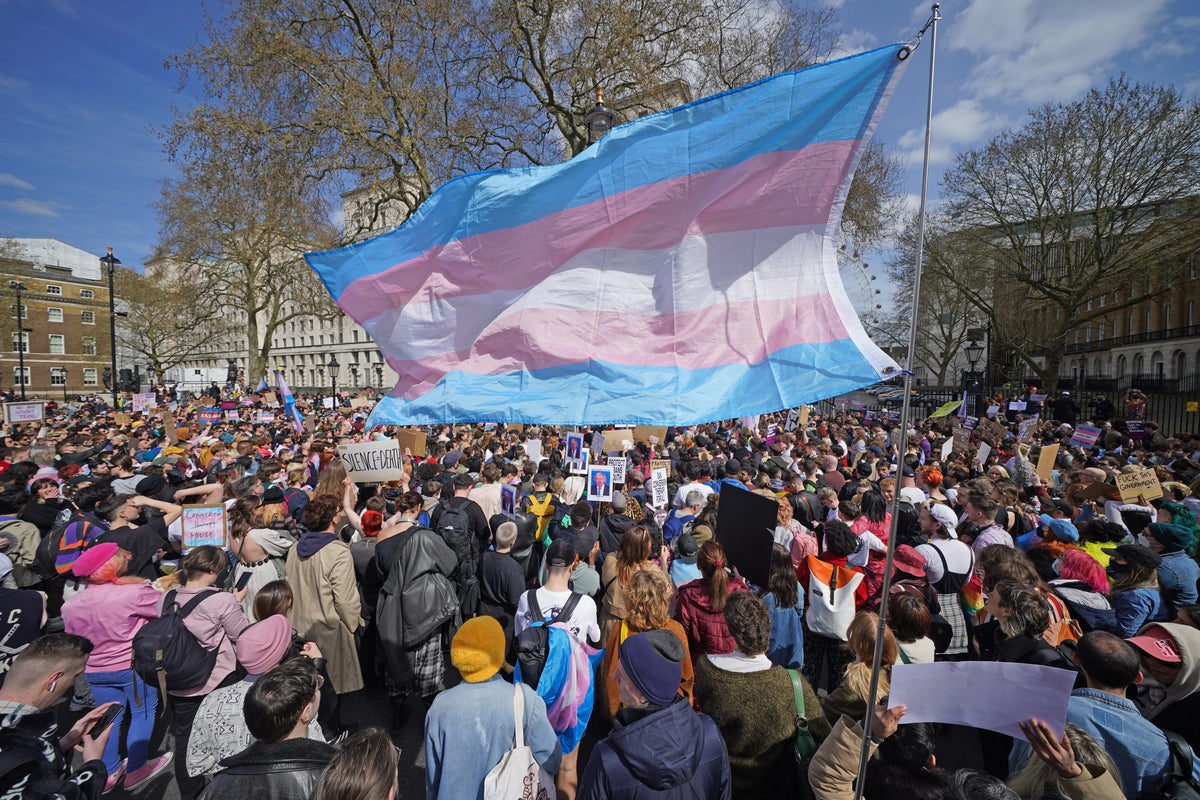
More than 250,000 people in England and Wales identify as transgender, according to new Census data which reveals the true picture of gender identity in Britain for the first time.
The Census 2021 asked the nation questions about their gender identity and sexual orientation for the first time in 200 years of data gathering. The questions were voluntary and were only asked of people aged 16 and over in England and Wales.
On gender identity, people were asked: “Is the gender you identify with the same as your sex registered at birth?”
A total of 45.4 million people (93.5 per cent) answered “Yes”. Whereas 262,000 (0.5 per cent) of people answered “No”, indicating that their gender identity was different from their sex registered at birth.
This figure does not include Scotland and so will likely be bigger for the UK as a whole. The figures are the first concrete data on the size of the trans community.
Previous tentative government estimates had suggested that there were between 200,000 and 500,000 trans people in the UK.
In response to the Census, 118,000 people indicated that they were transgender but did not specify whether they identified as a trans woman or a trans man. Of those who did, the data was evenly split between those who identified as trans men, and those who identified as trans women – with 48,000 people identifying as each.
On the question of sexual orientation, around 43.4 million people (89.4 per cent) identified as straight or heterosexual.
Around 1.5 million people (3.2 per cent) identified as LGB+, responding that they were either “Gay or Lesbian”, “Bisexual”, or “Other sexual orientation”.
Charity Stonewall hailed the Census results as a “historic step forward”. Nancy Kelley, Stonewall’s chief executive, said: “For the past two centuries of data gathering through our national Census, LGBTQ+ people have been invisible, with the stories of our communities, our diversity, and our lives missing from the national record.
“Today is a historic step forward after decades of Stonewall campaigning to record sexual orientation and gender identity in the Census, finally painting an accurate picture of the diverse ‘Rainbow Britain’ that we now live in.”
London has a significantly higher gay or lesbian population than the rest of the country, with 2.23 per cent of respondents in the capital identifying as such.
This is compared to 1.21 per cent of people in the West Midlands and East of England, and 1.43 per cent in Yorkshire and The Humber.
For those who said they had a sexual orientation other than gay, lesbian or bisexual, 0.23 per cent – or an estimated 112,000 people – said they were pansexual.
Some 28,000 people, or 0.06 per cent, said they were asexual and 15,000 people said they were queer.







